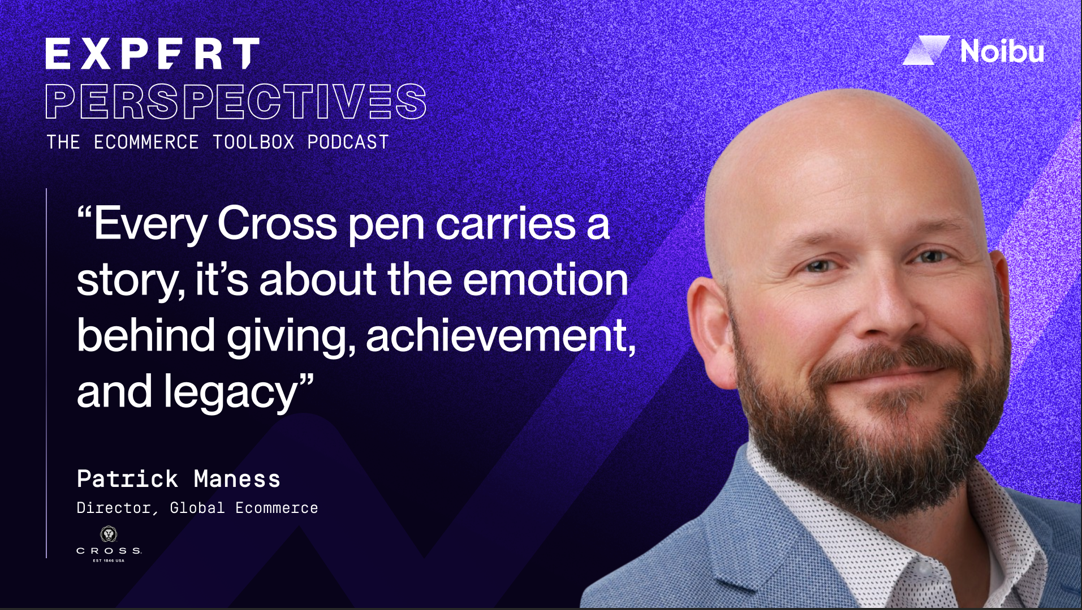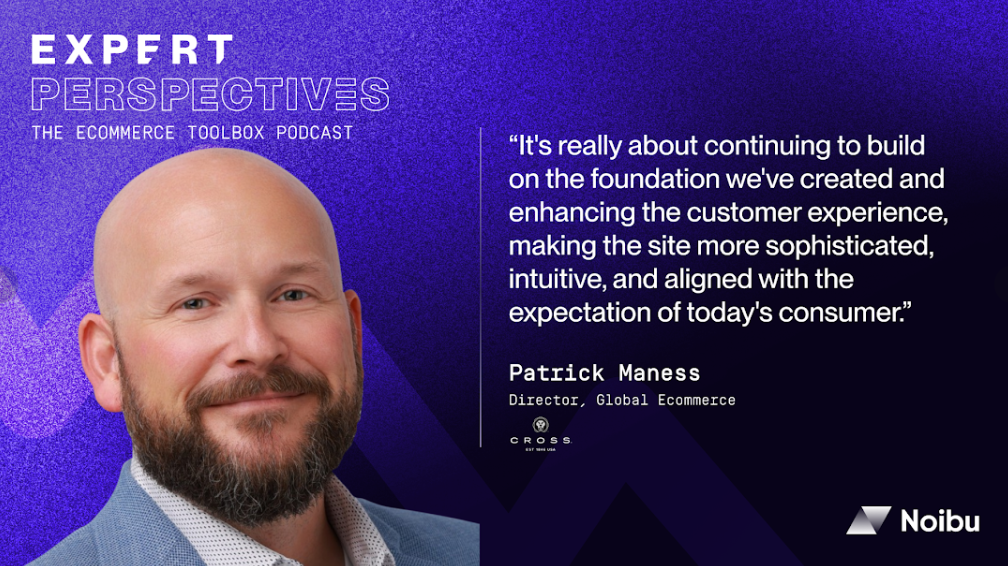Relaunching D2C on Shopify: Lessons from Patrick Maness of A.T. Cross
.png)
Get the full episode here
Published by Noibu | The Ecommerce Toolbox: Expert Perspectives
Guest: Patrick Maness, Director of Global Commerce at A.T. Cross Company
Host: Kailin Noivo, Co-Founder at Noibu
🎧 Listen to the full conversation on Apple, Spotify, or YouTube
In an era defined by rapid digital change, transforming a nearly two-century-old brand is no small feat. Yet, that’s exactly what Patrick Maness, Director of Global Ecommerce at A.T. Cross Company, accomplished. Known since 1846 for crafting timeless writing instruments, the company has successfully bridged its storied past with the demands of modern commerce, proving that even legacy brands can thrive in a digital-first world.
In this episode of the Ecommerce Toolbox: Expert Perspectives, host Kailin Noivo sits down with Patrick to unpack how A.T. Cross reimagined its ecommerce operations, built sustainable digital infrastructure, and modernized its brand without losing its heritage.
The big idea: Why legacy ecommerce modernization matters now
Today’s ecommerce environment moves at a velocity few legacy organizations are equipped to match. Customer expectations are shaped by DTC-native leaders like Apple, Glossier, and Amazon - brands that make frictionless, emotionally resonant shopping experiences the norm.
For heritage companies like A.T. Cross, this creates both pressure and opportunity. The pressure comes from outdated systems and slow operational tempo; the opportunity lies in their authenticity.
Heritage brands already possess what modern disruptors spend millions trying to build:
- Deep cultural trust
- Multi-generational emotional resonance
- Proven craftsmanship and brand equity
The key, as Patrick puts it, is translating legacy into digital relevance - meeting modern consumers where they are, without diluting what makes the brand iconic.
“Digital transformation isn’t about changing who we are. It’s about using digital tools to meet customers where they are and showing them why our heritage still matters.”
— Patrick Maness, Director of Global Commerce at A.T. Cross Company
Strategic replatforming: The foundation for everything else
When Maness arrived, A.T. Cross’s Magento 2 system was brittle, slow, and nearing end-of-life. “It wasn’t just an outdated website, it was an architectural bottleneck,” he recalls.
Instead of treating replatforming as an IT upgrade, Patrick treated it as a strategic transformation lever. Migrating to Shopify Plus didn’t just modernize infrastructure, it unlocked flexibility, scalability, and speed.
With Shopify, the team could:
- Clone storefronts for international partners
- Integrate natively with 3PLs and tax solutions
- Launch new functionality quickly without heavy dev cycles
- Lower technical barriers to experimentation
But perhaps more importantly, Patrick used the replatforming to change mindsets internally. He prioritized quick wins - optimizations that improved conversion rates and demonstrated ecommerce’s potential to leadership. Those early results built credibility, shifting D2C from a “side channel” to a core growth engine.
Lesson for legacy leaders: Replatforming isn’t about features - it’s about flexibility. Treat it as a strategic decision that defines your company’s ability to evolve, not just a technical one.
Disciplined rightsizing before geographic expansion
When Patrick joined, A.T. Cross’s international ecommerce operations were losing money. Many leaders would’ve doubled down, trying to “fix” every market at once. Instead, Patrick made a bold, counterintuitive move: pause international operations completely.
Why? Because scaling unprofitable operations doesn’t drive growth, it amplifies loss.
His strategy:
- Focus exclusively on U.S. D2C until the model was profitable
- Build repeatable, data-backed processes
- Define clear profitability metrics
- Use domestic results to prove ecommerce’s value to leadership
Only once that foundation was solid did A.T. Cross re-enter global markets - with a smarter, more scalable model.
The two-pronged global strategy
- Cross-Border Shipping: Partnered with 3PL providers to handle duties, VAT, and local delivery, minimizing operational overhead.
- Localized Distributor Stores: Created cloned Shopify storefronts managed by in-market distributors, maintaining brand control while empowering regional teams.
This approach balanced efficiency with authenticity, expanding global reach while protecting margins.
Lesson: Don’t chase geographic scale until your economics work domestically. Profitability in one market is worth more than unprofitable presence in ten.
Repositioning the brand emotionally
For A.T. Cross, the transformation wasn’t just technological, it was emotional. The goal wasn’t simply to sell pens; it was to sell the meaning behind them.
Patrick and his team reframed the brand’s D2C proposition from a product purchase to a generational gifting experience.

This subtle shift, from transactional ecommerce to emotional storytelling, helped A.T. Cross attract a younger audience without alienating its traditional customer base.
Key results of this repositioning:
- Expanded customer base down to age 30
- Achieved a 50/50 gender split
- Maintained premium positioning while broadening accessibility ($30–$1,300 range)
In the digital space, where functional differentiation is fleeting, emotional resonance becomes the ultimate moat.
Building sustainable digital infrastructure
Legacy transformation isn’t a sprint - it’s a disciplined, iterative process. Patrick’s “crawl, walk, run” framework ensured progress without burnout:
- Crawl: Audit and stabilize the existing Magento platform while planning the migration.
- Walk: Migrate to Shopify Plus and streamline operations.
- Run: Scale through global expansion, data-driven marketing, and D2C storytelling.
This approach allowed the business to grow sustainably, building confidence internally and ensuring no stage of transformation outpaced the company’s operational readiness.

The bigger picture
Heritage brands often fear that modernization means sacrificing authenticity. Patrick’s story proves the opposite: true modernization amplifies legacy, it doesn’t erase it.
By grounding transformation in data, discipline, and emotion, A.T. Cross has shown that even a 180-year-old brand can act like a startup: nimble, creative, and customer-obsessed, without losing its soul.
Want to hear more from Patrick Maness on transforming a heritage brand in the digital age? Listen to the full episode of the Ecommerce Toolbox: Expert Perspectives on your favorite podcast platform.
Listen to the full episode now


.png)
.png)
.png)